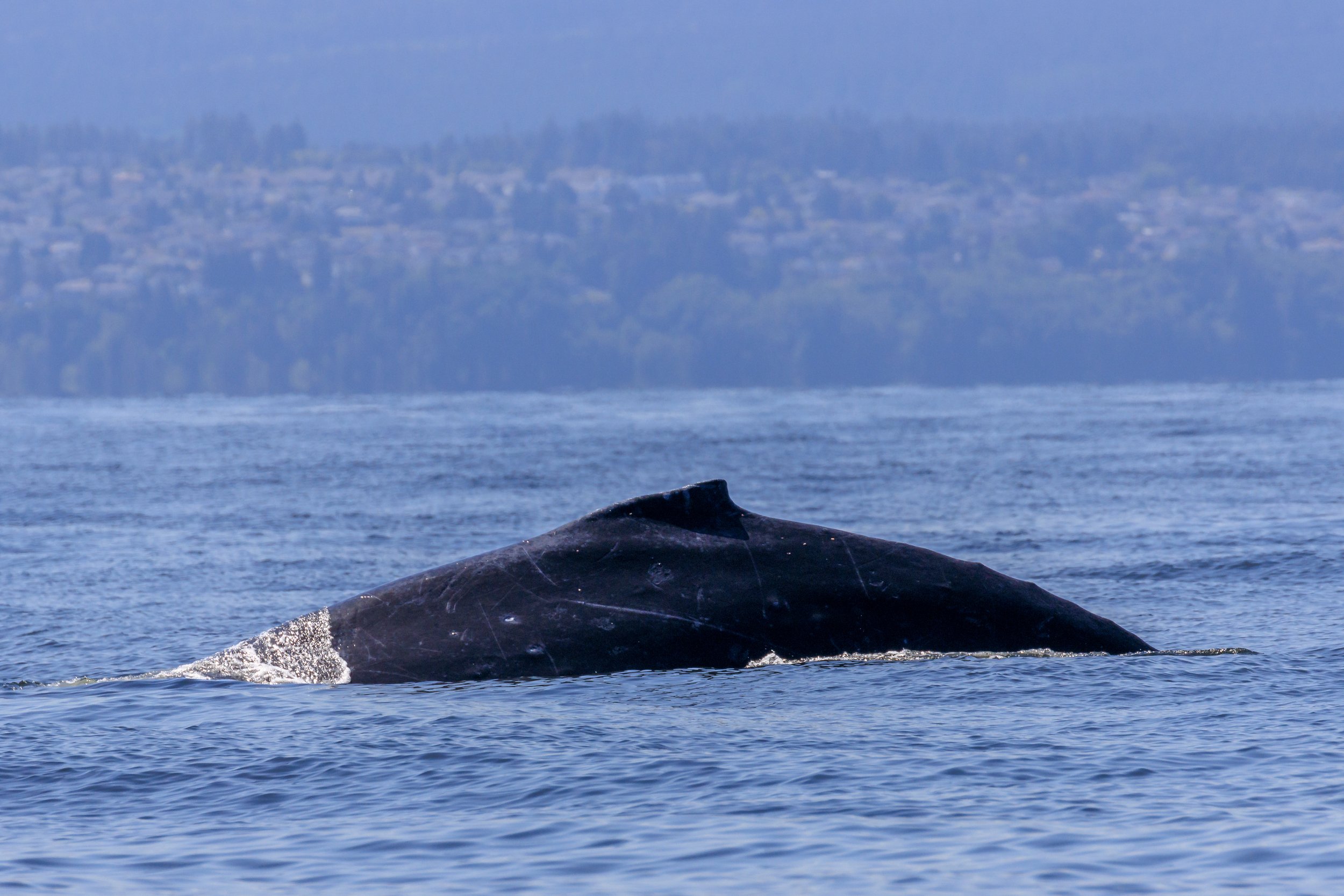May 28, 2023 - T101s and a healthy dose of Humpback Soup
As we left the harbour on the morning of the 28th we were feeling lucky! It wasn’t long before we started to see some blows in the distance, a lot of blows actually. It seems we stumbled into what we lovingly call “humpback soup”!
This name doesn’t mean that we are trying to eat these whales, but instead that the water is like chunky soup, with the chunks being an abundance of whales. Although there were more blows in the distance today we spent the majority of the time with two pairs of humpbacks; BCZ0410 Anvil and BCX1416 Corona/Phi, and BCX1660 Prowler and KEY0046.
As we were spending time with our humpbacks we got word from another boat that there was a pod of orca also spotted not too far away, so we decided to head in that direction to get a double species day.
Although the two species of whales weren’t too far apart it isn’t likely that the two were interacting at all, or maybe even aware of the other's presence. Humpbacks and orca don’t usually get along, since humpbacks are on the menu for transient orca. Usually, it’s just the calves and not a full-grown humpback, but they still aren’t too pleased about being nearby when we’ve seen them interact. Certain humpbacks who have scarring left from orca attacks will actually try and fight the orca if they get too close. BCX1773 Valiant is a great example of this, whose fluke is clearly been chewed on by an orca, and he’s been recorded going after the orca now multiple times.
Today though, the orca were minding their own business and the humpbacks were doing the same. It didn't take long before we were able to ID these orca. It’s one of our favourites the T101s! This pod consists of three whales travelling together. The matriarch and her two sons:
T101 Reef ♀ (≤1969)
T101A Rush ♂ (1993)
T101B Lagoon ♂ (1997)
Today this pod wasn’t up to much, they were just travelling north through the Strait of Georgia. Even when we catch the whales travelling it’s an amazing sight. Especially with two large males in the mix. Reef herself is also one of the larger females that we see. Although socially the female orca are the most important and the more interesting ones to talk about, getting to see the adult males is always a fan favourite. The males are physically much larger than the females, growing to about 8m long, with a towering 6-foot-tall dorsal fin. The females will be a couple of feet shorter with only about a 4-foot-tall fin.
After our time with the orca was up we started the journey back to the Nanaimo harbour, happy that our lucky feeling was right. We stopped to see some pinnipeds along the way and then ended up back at the dock, pleased with all the wildlife we got to observe today.
Some moments from the trip were captured by the onboard naturalist Aly Kohlman and can be viewed below!
Prowler (BCX1660).
KEY0046.
Prowler (BCX1660).
Looking up the dorsal.
Look at those nostrils!
KEY0046.
KEY0046.
Prowler (BCX1660).
Anvil (BCZ0410).
Anvil (BCZ0410).
T101A Rush.
T101 Reef and one of her sons, T101B Lagoon.
T101B Lagoon.
T101 Reef with her son T101B Lagoon.
T101 Reef with her son T101B Lagoon.
A big Steller sea lion chilling off the rocks.
An unwanted visitor.
Someone isn’t happy having a visitor near their nest!
Cormorants at the Gabriola Bluffs rookery.
Eaglet.
An observant parent watching over the nest.


























